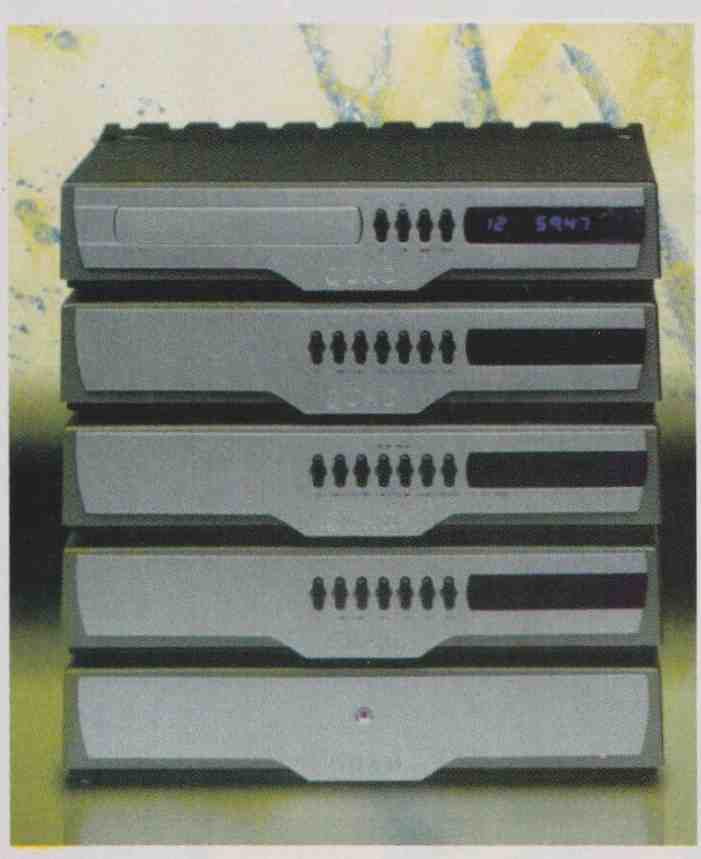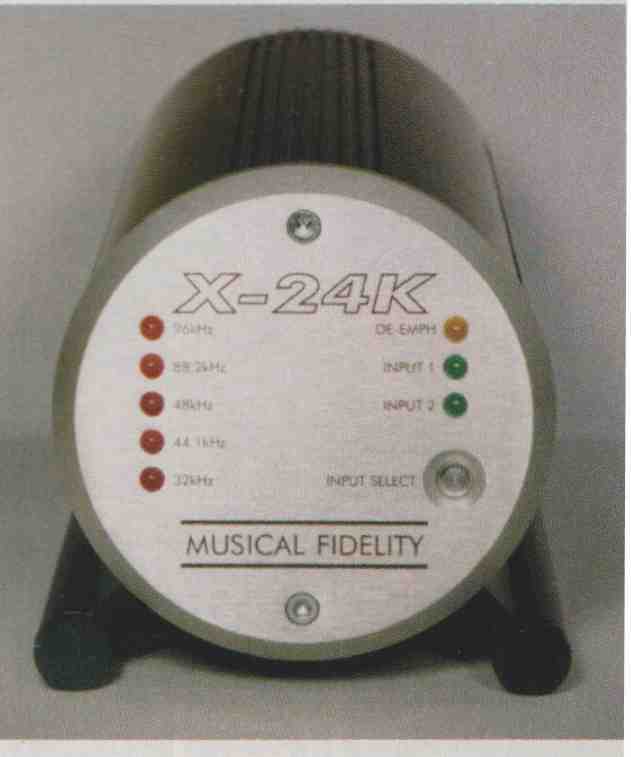.It’s out of character, I know, but I feel a bit Pollyanna-ish this month because the sun is out, the sky is blue, and I’ve just re turned from the most upbeat hi-fi show I’ve attended in a decade. After months of nuthin’ but Bill ‘n’ Monica, terrorist attacks on embassies, an IRA massacre, the further decline of Asia’s economies, and other end-of-millennium misery, who’d have expected an upturn in the fortunes of high-end audio?
It was TAG McLaren Audio’s world launch that helped make the show such a success. Before I say why, I must disclose that I’ve helped the company with its newsletters, manuals, and catalogs and written some CD liner notes for it as well. Further, the show that restored my faith in the audio future was sponsored by Hi-Fi News, the magazine that I work for. But ignoring TAG McLaren’s launch because I wrote some copy for them would be as stupid as ignoring all introductions of new transistor amps because I am thought to be blatantly prejudiced in favor of tubes. (Still, if you find my prose too boosterish, just add a kilo of salt.)
The focus of the Hi-Fi Show at Heathrow Airport, which is open to the public, is solely audio and home theater. (It doesn’t attract high-roller exhibitors like computer game companies, mobile phone makers, and car stereo manufacturers.) AS though this is where Tag Mclaren Audio made its debut, it beloved the way companies the size of Sony and Panasonic do at massive trade shows like CES: confidently and with style. For starters, the shear size of the exhibit booth, and its prime position behind the registration desk at the hotel where the show was held, made TMA unavoidable. And the company seemed to rattle almost everybody’s cage by building a multimedia booth worthy of a major international brand—even though its initial line is purist audio.
Trading on its auto-racing lime, TMA placed its latest Formula One car in front of the booth and brought in such guests of honor as legendary driver John Watson and current Fl pilot David Coulthard. To explain to Americans what this means to Europeans (America seeming to have abandoned Formula One for good), Coulthard appearing and signing autographs at a U.K. hi-fi show would be like Michael or Mario Andretti or Richard Petty or any Unser showing up at a U.S event Fortunately, TMA backed up the glitz (in-wall TVs running interviews with the design team, display cases full of prototypes, separate hospitality and listening rooms, slick point-of-sale promotional materials, and a souvenir stand worthy of a rock gig) with actual demonstrations con ducted by audio designers, not just sales men. TAG Mc Laren’s major contribution to the event was pulling in a whole bunch of people who other wise would never go near a hi-fi show. TMA attracted a crowd of mo tor-racing fans who, having made the trip, figured, “What the heck, I’m here, so I may as well check out the rest of this stuff.”
And that means much-needed new blood for the whole industry.
Meanwhile, down the hall was another momentous event, the return of Quad. After much speculation, Managing Director Stan Curtis made good on his promises and showed the new 99 series of electronics and preproduction samples of new electrostatic speakers. The middle model is what we’ve all dreamed about: a Quad E5L63 updated to address every criticism of the original. The new version, the 988, has a truly rigid frame, improved electronics, and better dynamics. The great news? The price has actually dropped—by 25%. And because Quad has its own U.S. distribution network, you guys will get the benefits, too. (I got in line for a review for Audio, but the company is not sure which electrostatic to send first, the 988 or the taller 989 with two midrange panels and four bass panels. It’s dangerous to make promises, though it looks like you’ll be reading about one of these systems in about three months. Just bear with me— and Quad—in case it takes a bit longer.)
Another “talk of the show” item was the second in Sonus Faber’s Homage series, that trio of delicious speakers designed to honor the great violin makers of Cremona. The Guarneri’s follow-up (unveiled in Lon don before the main Italian show) is the floor-standing Amati. As gorgeous as its predecessor, this beauty arrived finished in some luscious, tomato-red wood, and it sounded, with Audio Research electronics, like angels singing. If the U.K. price is around £10,000, expect its American price to be something in the region of $16,000 to $20,000 per pair. Whatever Sumiko asks Stateside for the Amati, I can assure you of one thing: There will be a waiting list.

ABOVE: A mid much speculation, Quad unveiled its new 99 series of
electronics.
Although not new to American readers, 96-kHz/24-bit recording, the latest DVD shenanigans, and Sony/Philips’ dual-layer Super Audio CD all generated buzz. With out wishing to predict anything about the future of Super Audio CD or of DVD itself (a fiasco so far in the U.K., with fewer than 40 titles available in Region 2), it looks as though the 96-kHz/24-bit format is succeeding, despite its origin among smaller audiophile companies. Its leading proponents, Michael Hobson of Classic Records and David and Norm Chesky of Chesky Records, flew in from the U.S. to support it. They were overjoyed to see that British specialist brands had risen to the occasion by introducing a bunch of affordable 96-kHz/24-bit D/A converters.
And I do mean “affordable.” Musical Fidelity’s 24K, in the company’s X series, and new models from Creek and Alchemist come in at less than $680 ($350, in Alchemist’s case). Amusingly, the main worry voiced by one manufacturer was that owners of the many DVD players made before mid-1998 that can’t pass 96-kHz/24-bit signals may blame their D/A converters rather than their DVD players.

ABOVE---Musical Fidelity joins the 96-kHz/24-bit party with its X-24K
D/A converter.
SOTA reappeared with an all-new record-spinner, the Millennia Vacuum turntable, a break from the classic SOTAs of yore and evocative of current VPI’s. What’s so unusual about SOTA launching a new product in the U.K., not the U.S., is that the company had a negligible presence here in its previous guise. One might suppose that this is a measure of the esteem in which the Heathrow show is held, especially since other U.S. companies introduced products ahead or on the heels of home launches. Among them were Revel, unveiling new speakers (including a floor-stander). and I noticed a new Mark Levinson 96/24 D/A converter. Chesky Records turned up with consumer-ready versions of four 96-kHz/24-bit DVD titles, and Toterrt of Crada, brought along the Forest floor-standing speaker. There were Italian, French, Japanese and German launches as well.
But this was, first and foremost , a British affair, and for many, home-grown Arcam stole the show with that least coveted of sources: radio. The company received a lot of mainstream media attention for the Alpha 10, the world’s first commercially avail able tuner for terrestrial (as opposed to satellite) digital radio. It can be used only in Europe so far (I gather that the U. S. will be using a different mode of digital transmission), but don’t think you’re the only ones i find this tuner solely of academic interest: I, who live a mere 60 miles from London, won’t be able to enjoy it either. (Then again, stereo television has been available for the better part of a decade here, yet my local transmitter still carries BBC TV programs only in mono.) Ever since I left the U.S., where variety makes radio worth while, I’ve never given a damn about it, though I have to admit that Arcam’s demo was convincing. I loved the digital readout, which provides the song and performer in formation that most DJs neglect to deliver. The sound was described as “near-CD quality” but I can’t wait to try it out side- by-side with a conventional FM feed.
Too bad I’ll have to do it in another part of the country.
Adapted from 1998 Audio magazine article. Classic Audio and Audio Engineering magazine issues are available for free download at the Internet Archive (archive.org, aka The Wayback Machine)